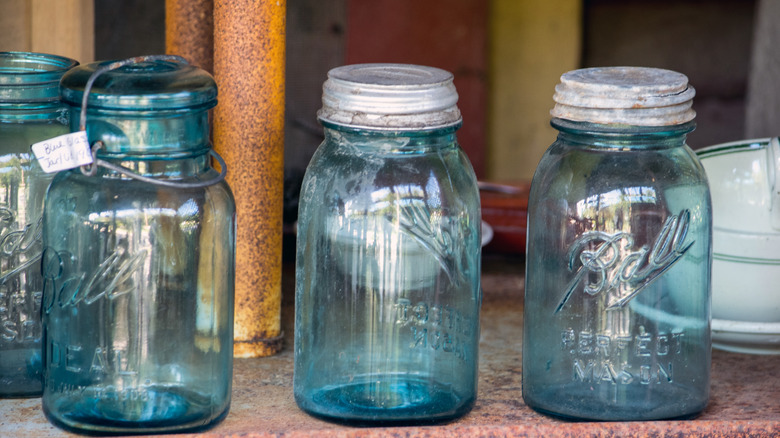How Canning Foods At Home Became Widely Accessible
Most of us understand the comfort of having a full pantry. For some, the sense of satisfaction and well-being that comes from seeing rows of canning jars full of the summer's garden bounty can be reassuring. It may be a childhood memory of parents or grandparents stocking up for the winter, or you may be a home canner as more of us have been gardening since COVID-19 (per Garden Pals). The pandemic and concerns regarding food shortage have many us planting our own home gardens, be it in raised beds on a parking strip, pots on your balcony, or even countertop gardens. The fantastic amount one Roma tomato plant can produce (up to 20 pounds) may have you thinking about putting together some marinara sauce for winter (via Gardening Channel).
You may be wondering how home canning came to be and how we ended up with this old-school methodology in many of our modern kitchens. Many inventions created to aid in war efforts have brought many of the developments we enjoy today. If you have ever been treated with penicillin, had a vaccine, a blood transfusion, flown on a jet, or used a computer, you have used an invention created during World War II (per History.com). Per the International Food Additives Council (IFAC), food preservation utilizing cans, jars, and tins was developed for feeding the Armed Forces. Still, it goes back much farther than the era of the Victory Garden era.
The Canning Jar's Origin
People have been preserving food for centuries using salt, fat, and fermentation (per Grow Cook Learn). But it was Napoleon's efforts to provide better nutrition for his troops that led to the process we know as canning. He offered a prize of 12,000 francs to anyone who could come up with a better method of preserving food than salted meat and dried biscuits. Five years later, French chef Nicolas François Appert invented a process of hermetically sealed glass jars (via IFAC). Appert's method included using wire, cork, and wax for sealing a tin lid to glass jars.
Fortunately for today's home canners, John Landis Mason improved on the technique and patented the first hermetically sealed jar with a top in 1958. Specifically, he designed a mold that made a bottle with threads and a screw top lid with a rubber seal that could be reused (per Mason Jars). Smithsonian Magazine reveals he unfortunately did not receive all of the fruits of his labors and likely died without the fortune he deserved. Later, Alexander H. Kerr designed the currently-used system: A two-part ring and disposable metal disk with an attached rubber seal (via Pick Your Own). Home canning may have a less romantic history than you may have thought, but with more home gardens and mounting concerns about food shortages, turning to this practical skill may be a good way to settle in for a long winter.

